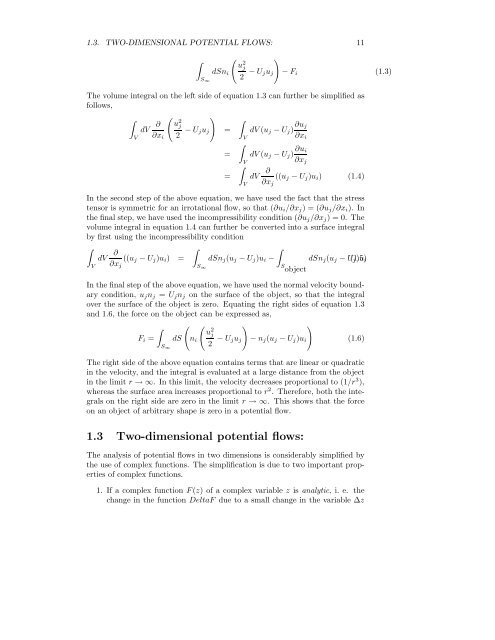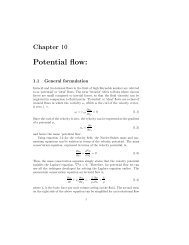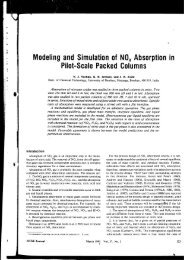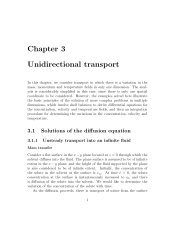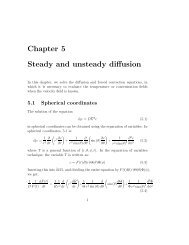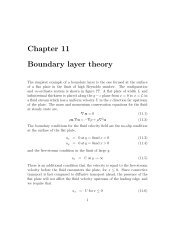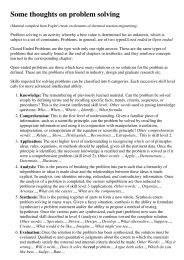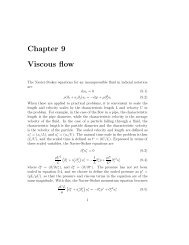Potential flow:
Potential flow:
Potential flow:
You also want an ePaper? Increase the reach of your titles
YUMPU automatically turns print PDFs into web optimized ePapers that Google loves.
1.3. TWO-DIMENSIONAL POTENTIAL FLOWS: 11∫S ∞dSn i(u2j2 − U ju j)− F i (1.3)The volume integral on the left side of equation 1.3 can further be simplified asfollows,∫VdV ∂∂x i(u2j2 − U ju j)===∫∫∫VVVdV (u j − U j ) ∂u j∂x idV (u j − U j ) ∂u i∂x jdV ∂∂x j((u j − U j )u i ) (1.4)In the second step of the above equation, we have used the fact that the stresstensor is symmetric for an irrotational <strong>flow</strong>, so that (∂u i /∂x j ) = (∂u j /∂x i ). Inthe final step, we have used the incompressibility condition (∂u j /∂x j ) = 0. Thevolume integral in equation 1.4 can further be converted into a surface integralby first using the incompressibility condition∫VdV ∂∂x j((u j − U j )u i ) =∫∫dSn j (u j − U j )u i −S ∞ S objectdSn j (u j − U(1.5)j )u iIn the final step of the above equation, we have used the normal velocity boundarycondition, u j n j = U j n j on the surface of the object, so that the integralover the surface of the object is zero. Equating the right sides of equation 1.3and 1.6, the force on the object can be expressed as,∫ ( ( ))u2jF i = dS n iS ∞2 − U ju j − n j (u j − U j )u i (1.6)The right side of the above equation contains terms that are linear or quadraticin the velocity, and the integral is evaluated at a large distance from the objectin the limit r → ∞. In this limit, the velocity decreases proportional to (1/r 3 ),whereas the surface area increases proportional to r 2 . Therefore, both the integralson the right side are zero in the limit r → ∞. This shows that the forceon an object of arbitrary shape is zero in a potential <strong>flow</strong>.1.3 Two-dimensional potential <strong>flow</strong>s:The analysis of potential <strong>flow</strong>s in two dimensions is considerably simplified bythe use of complex functions. The simplification is due to two important propertiesof complex functions.1. If a complex function F(z) of a complex variable z is analytic, i. e. thechange in the function DeltaF due to a small change in the variable ∆z


